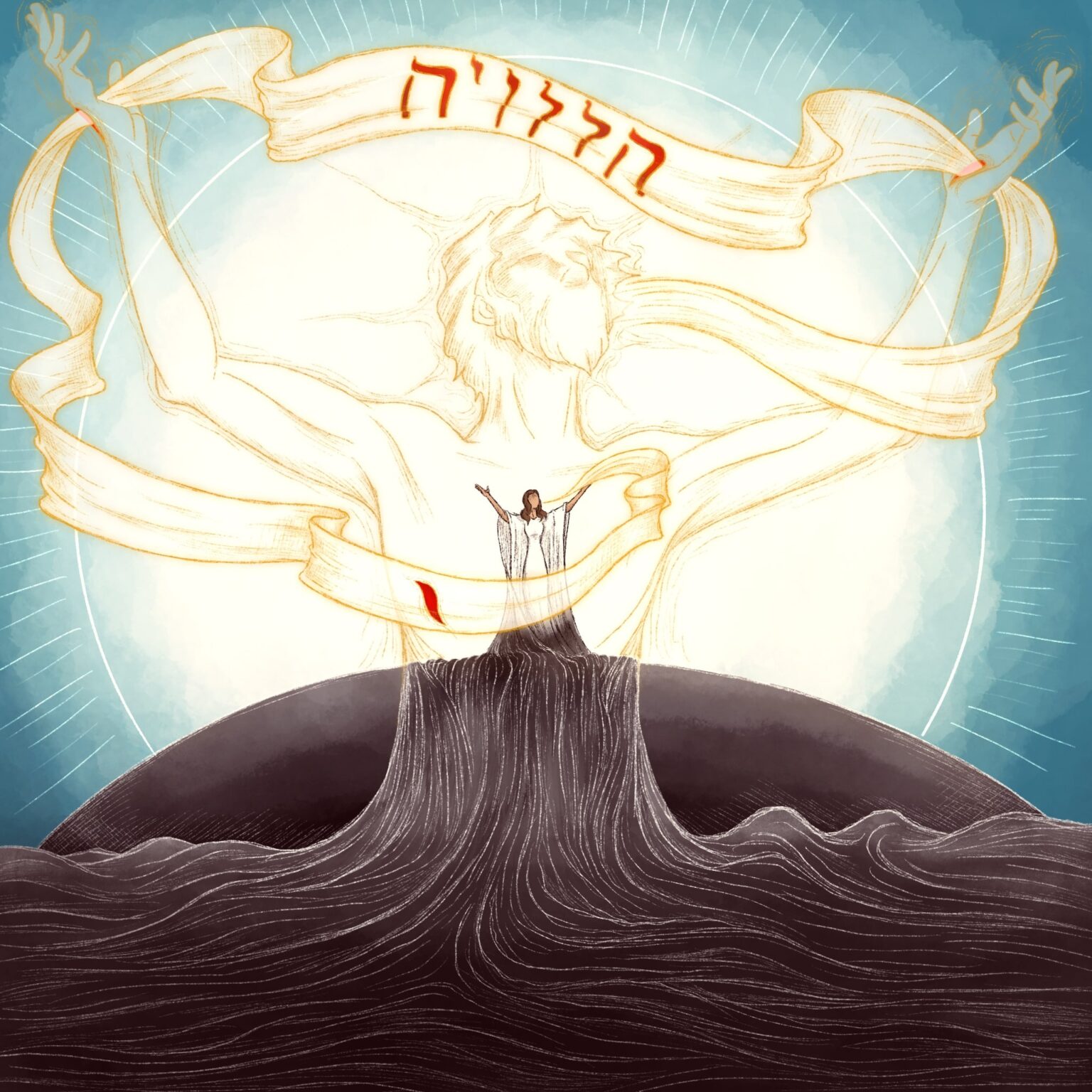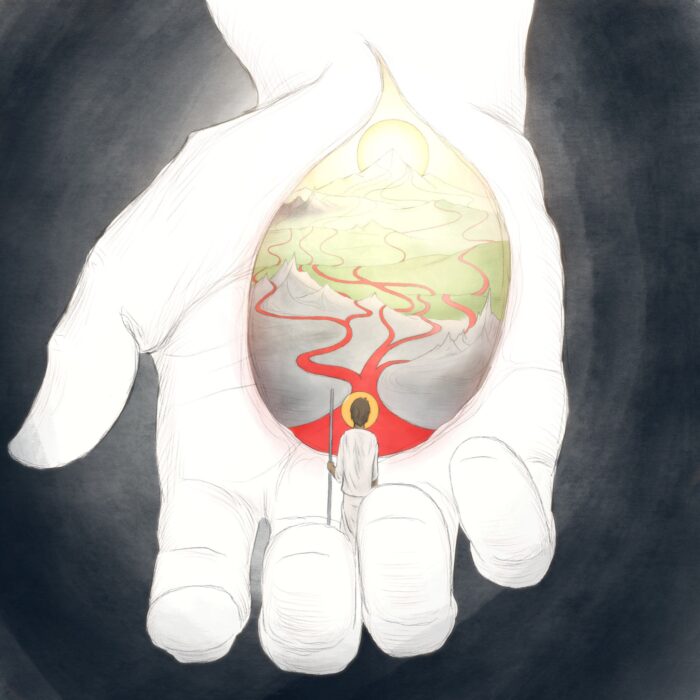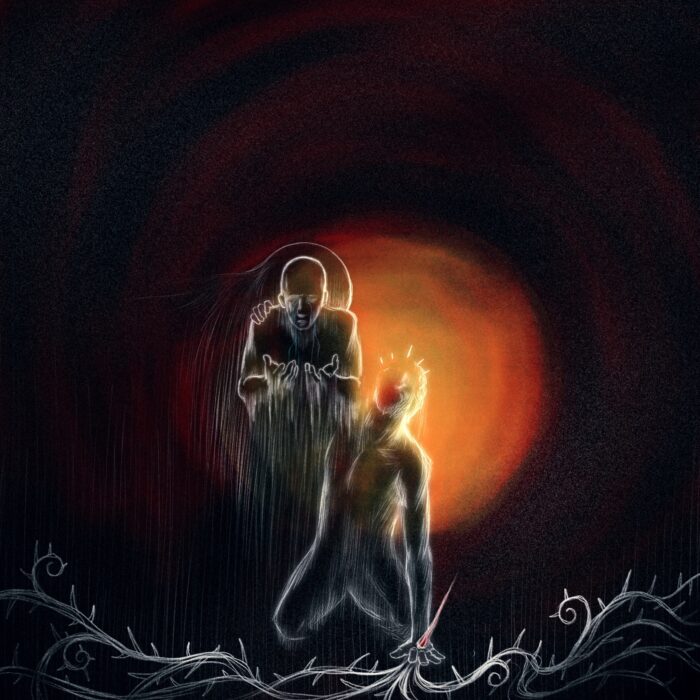Psalm 40:1-3, “I waited patiently for YHWH; he inclined to me and heard my cry. He drew me up from the pit of destruction, out of the miry bog, and set my feet upon a rock, making my steps secure. He put a new song in my mouth, a song of praise to our God.”
Verse Explained
These first three verses of Psalm 40 picture a faithful saint in the midst of suffering, crying to the Lord and being raised up from that suffering—which David calls a “pit of destruction.” And, having been raised up, the faithful one is filled with praise to the Lord. There were many directions I could take this verse as far as an illustration goes, but as I read the entire Psalm, something really important stood out to me, namely, verse 6-8,
“In sacrifice and offering you have not delighted, but you have given me an open ear (translated in Hebrews 10:5-7 as, “a body you have prepared for me.”). Burnt offering and sin offering you have not required. Then I said, ‘Behold, I have come; in the scroll of the book it is written of me…’”
This is significant because the author of Hebrews cites this passage in Hebrews 10:5-7 as an anticipation of Christ’s incarnation and death as the true, God-satisfying sacrifice. Once we see that the Holy Spirit interprets verses 6-8 of Psalm 40 as applicable to the incarnation and crucifixion, it seems to me that we are not unfaithful to the text to interpret the cry for deliverance from the “pit of destruction” in verse 1 as Christ’s own cry for deliverance from death—a cry that was heard (Hebrews 5:7).
With this interpretive lens in place, then, I read Psalm 40:1-3 as first and foremost being a glimpse of Christ’s own turmoil in the throes of death and substitionary damnation and His subsequent deliverance from that pit through the resurrection. Jesus Christ is the only true Faithful Servant who waits for the Lord in suffering, who cries to His God from the pit, and who is lifted from the bog of damnation onto the rock of God’s promised resurrection. HE is both the Deliverer AND the Delivered One….and only by virtue of our union to Him by faith (whether before His coming, as was the case for David, or after His coming, as is the case for us), only by virtue of this faith-union are we ALSO able to lay hold of the sure deliverance of YHWH from all of our pits—including the supreme pit of death and hell. This cry and deliverance and praise is FIRST about Christ, and SECONDLY about us…and about us only because we are in Christ.
Picture Explained
Since all of our deliverances (whether the “little” ones of the sufferings in this life or the “big” one of salvation itself) since all of our deliverances are participation in The Deliverence of Christ’s resurrection, I wanted to center the picture on the resurrection of Jesus. Inside the image of Christ, you can see the saint, also raised up from the miry pit, also stood upon the solid rock of Christ and His victory over death, but only because she is IN CHRIST.
The “song of praise to our God” is represented by the banner swirling around the image. Note three things about it.
First, that the “content” of the song is the Hebrew word, “Hallelujah,” which literally means “Praise Yah[weh].” This is fitting since the song of praise that Christ’s resurrection secures (a song which, though purchased by His death and resurrection is sung across all time since He has, in truth, been slain and raised from before creation, Revelation 13:8…..meaning that ALL songs of praise to God in ALL times are merely appropriations and instantiations of THIS single great song of praise)…this is fitting since the song of praise that Christ’s resurrection secures is revelation and exaltation of God’s NAME or IDENTITY or GLORY.
Secondly, see that the song weaves through Christ’s wounds. This is in order to emphasize that the suffering of the Lord becomes the song of His saints upon His resurrection (consider Revelation 5:9ff).
Finally, see that the song of praise to God is firstly Christ’s song and secondarily His saint’s song. Jesus is the worship leader of the Church (consider Psalm 22:22-31). He is not only the object of our worship, but is the supreme leader of our worship. We worship because He worships. Our song of praise to the Father is the Son’s song of praise to the Father, kindled in our hearts and placed on our tongues by the Holy Spirit.




